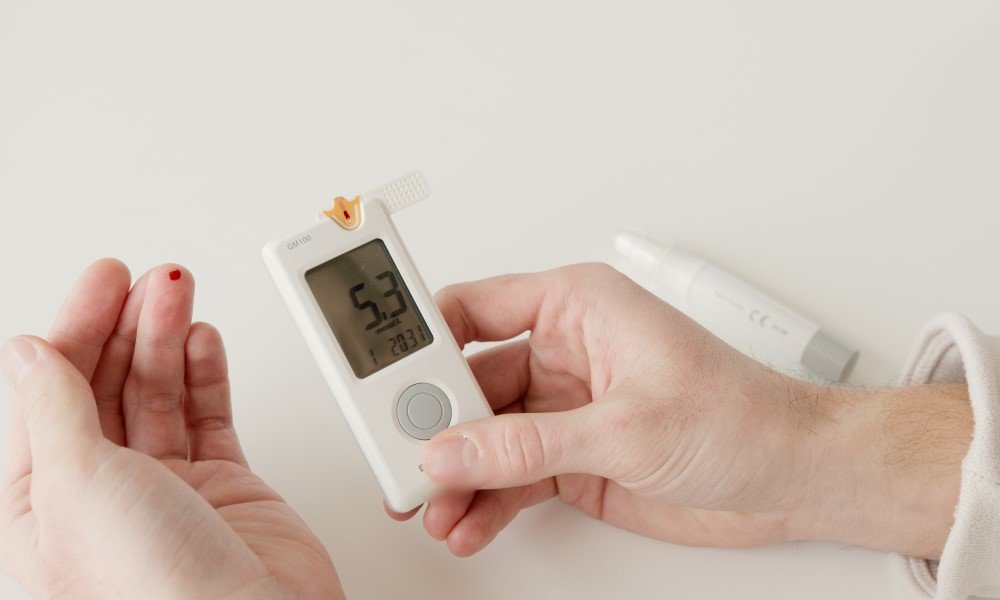Type 2 diabetes is a big problem in today’s society, with around 3 million people in Canada alone being diagnosed with it.
That may seem like a very large number, but it does not even account for the estimated 10 million more who remain undiagnosed with diabetes or prediabetes.
Type 2 diabetes accounts for 90% – 95% of all cases of diabetes.
Diabetes is a serious disease, but also one that can be prevented, treated, and even reversed!
Having type 2 diabetes increases the risk of cardiovascular disease, renal (kidney) disease, stroke, heart attack, non-traumatic lower limb amputation, and premature death.
Those diagnosed are twice as likely to suffer an early death compared to those of similar age without diabetes. Diabetes can reduce lifespan by 5 to 15 years.
Type 2 diabetes occurs due to an acquired resistance to the hormone insulin.
When food is being digested, the pancreas creates insulin, which enters the bloodstream to reduce the amount of sugar in the blood. This sugar is then stored in the muscles, liver, and fat cells.
When the blood sugar levels are consistently high, the pancreas keeps releasing insulin in an effort to lower the blood sugar.
Eventually, the body becomes used to the high insulin levels, and the insulin becomes continually less effective. The body releases even more insulin to make up for the increasing tolerance level, and the cycle continues.
Over time, consistently high blood sugar and insulin levels result in the person becoming insulin resistant, and developing diabetes.
Reducing The Risk
Unhealthy eating and sedentary lifestyles are likely the primary causes. Excessive carbohydrate consumption, unnecessarily large meals, and spending days or weeks at a time not getting any exercise will all decrease insulin sensitivity.
Reports show that almost 90% of type 2 diabetics are overweight or obese. This is one of the biggest risk factors.
Age is also a factor which increases the risk of developing type 2 diabetes.
An alarming recent trend is the increasing number of young people having type 2 diabetes.
This is such a common issue because of easy or gratifying, but unhealthy dietary habits and lifestyle choices. Another effect of this can be seen in the increase of childhood obesity, which is often linked with type 2 diabetes.
Most cases can be prevented or improved by pursuing a healthy, active lifestyle.
Adjust Your Eating Habits
Research suggests that reducing overall carbohydrate consumption, as well as specifically that of foods with a high glycemic index (fast carbs), does appear to be an effective treatment of, and preventative measure against type 2 diabetes.
The negative effects of a high carb diet (in terms of insulin sensitivity) occur when foods with a high glycemic index are consumed. These include processed foods and beverages high in starch and refined sugar.
The negative effects are mostly eliminated when your carbs come from high fiber foods with a low glycemic index, such as vegetables and whole grains.
You can reduce your risk of type 2 diabetes by making some simple dietary adjustments, such as:
- Eating protein with all meals, and eating less carbohydrates.
- Avoiding consumption of processed foods.
- Eating foods containing omega-3 fatty acids.
- Consuming vegetables or fruit multiple times a day.
- Consuming 25 grams or more of fibre each day.
- Eating fish, because coenzyme Q10 (found in fish), helps control the release of insulin from the pancreas.
These measures can also help return insulin tolerance and blood sugar levels closer to a normal range in those who already have diabetes.
Get Active and Reduce Your Weight
Reducing body fat to within a healthy range can also significantly reduce the risk. As obesity is a major risk factor for type 2 diabetes, exercise has a very significant role to play in prevention and reversal. For the best results, it is recommended that the following is implemented:
- Exercise for at least half an hour to an hour every day.
- Burn at least one thousand calories per week through aerobic activity (walking, biking, swimming, etc.).
- Do a minimum of two days of resistance training per week.
- Do moderately intense physical activity as close to daily as possible.

Reduce Your Stress Level
Stress can also have a pronounced effect on the risk of developing diabetes, as stress stimulates the release of cortisol into the body. More cortisol will elevate blood sugar levels, and with higher blood sugar comes more insulin.
Even if your diet is healthy and you get adequate exercise, if your cortisol levels are constantly elevated because of stress, you will likely be at an increased risk of developing type 2 diabetes due to high blood sugar.
Therefore, managing stress is also a very important part in the control and prevention of type 2 diabetes.
Final Thoughts
If you suffer from diabetes, or fear that you may be at risk, now is the time to act!
Type 2 diabetes is preventable, and if you have it, it can be controlled and reversed. The best way to go about that is with healthy, natural food, and an active, low stress lifestyle.
Join Us Today to fight back against diabetes!
Doug Paulson
Founder / Personal Trainer at BodybuildingAfter55
What are your thoughts or experiences about type 2 Diabetes? Let me know in the comments below!
Like this post? Please don’t forget to share it!
- Don’t Let Obesity Steal Your Health and Fitness - May 13, 2021
- Fight Back Against Type 2 Diabetes - May 8, 2021
- How to Build a Home Gym on a Budget - December 26, 2018





